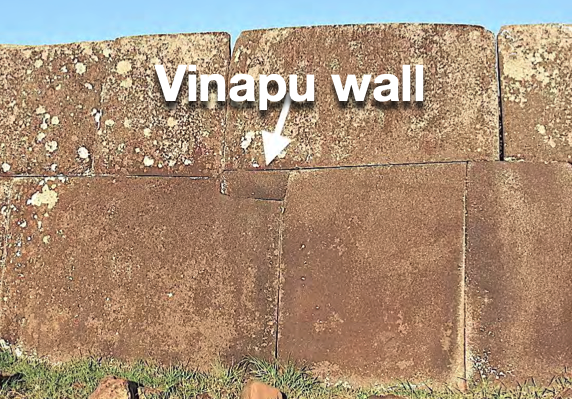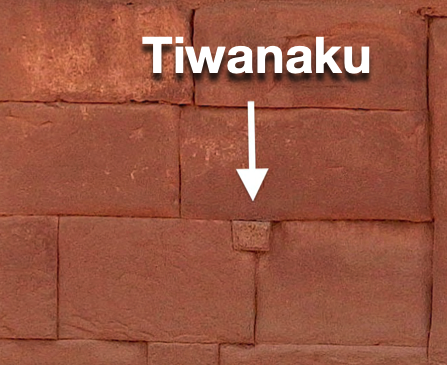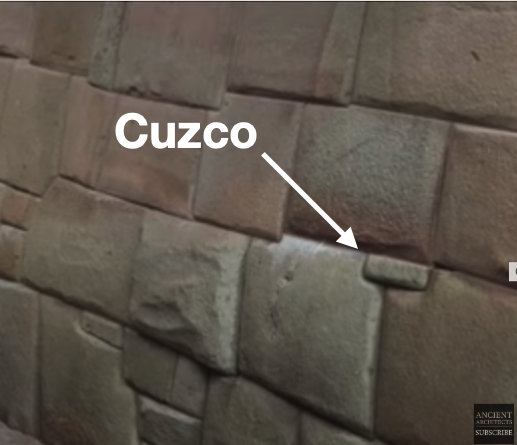The megalithic wall on Vinapu, Rapa Nui, shown below, was built around 850-950 CE.
This dry-stone masonry structure exhibits a distinct architectural style that shares similarities with the walls of Tiwanaku built around 600 CE, a pre-Inca civilization that flourished in the Lake Titicaca region of South America, as well as the walls of Cuzco, the capital of the Inca Empire.
The Vinapu wall's construction technique, characterized by interlocking polygonal blocks fitted together without mortar, mirrors that of Tiwanaku's monumental structures. Additionally, the Vinapu wall's curved profile and use of small, wedge-shaped stones to fill gaps between larger blocks echo the architectural style of Tiwanaku.
These striking parallels have led scholars to propose a connection between the ancient people on Rapa Nui and Tiwanaku. One theory suggests that Rapa Nui voyagers may have traveled to Tiwanaku, adopting and adapting its architectural techniques upon their return. Alternatively, it is possible that Tiwanaku artisans or engineers journeyed to Rapa Nui and imparted their knowledge to the local population.
Intriguingly, the Vinapu wall predates the construction of the Cuzco wall by centuries. The Inca, renowned for their architectural prowess, are believed to have built the Cuzco wall around 1400 CE. The chronological disparity between the two structures suggests that the ancient people on Rapa Nui had mastered this sophisticated architectural style long before the rise of the Inca Empire.
The Vinapu wall stands as a testament to the ingenuity and craftsmanship of the ancient people on Rapa Nui. Its architectural parallels with Tiwanaku and Cuzco raise intriguing questions about potential cultural connections and the spread of architectural knowledge across the Pacific Ocean.


